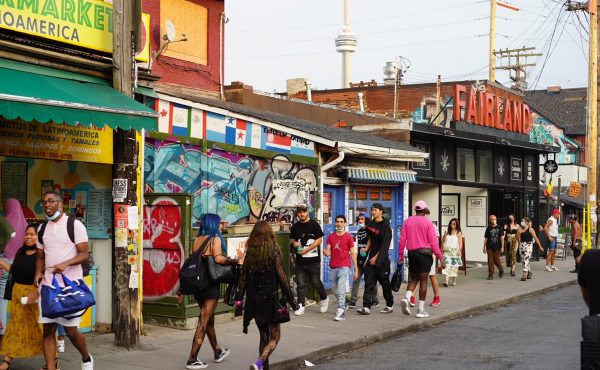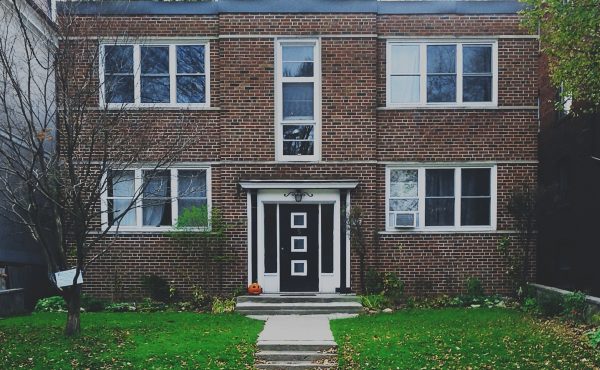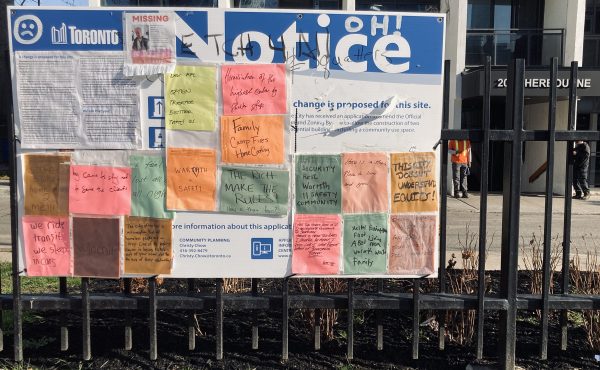By Idil Burale and John Lorinc
In Toronto, we are good at starting things, but we tend not to follow through or evaluate them down the road. Even before the summer of 2005, Mayor David Miller had drafted a blueprint for community safety based on a heightened concern about safety and guns, which had plagued him since the campaign trail.
Motivated by public pressure and the feedback he received during the 2004 budget consultation process, Miller came up with a plan that explored a myriad of initiatives for the three identified neighbourhoods (Malvern, Jane & Finch, and Jamestown), ranging from summer jobs placements for youth, to opening up schools after hours for community use, and an increased co-ordination of outreach workers and service planning, amongst other.
On paper, it was a great idea, and was approved by council in the spring of 2004. The Mayor’s Community Safety Plan has been in place ever since as a risk deterrent policy designed to balance prevention and enforcement through a ‘neighbourhood-building’ approach. But did it work, or were those measures mainly cosmetic fixes meant to create the impression of action?
Prioritizing or politicizing Toronto’s low-income neighbourhoods?
In 2004, the City of Toronto and United Way convened a task force on how to strengthen the community infrastructure of the inner suburbs and address the inequities in social services. The move followed a 2003 report from Toronto City Summit Alliance (today’s Civic Action), and a ground-breaking 2001 assessment from UW entitled, “Poverty by Postal Code.”
The growing concentration of poverty in Toronto’s inner suburbs had been well documented for decades prior to the 2005 panic, but the spate of gun violence expedited political action and resulted in the designation of 13 “priority neighbourhoods.”
According to the United Way, these neighbourhoods were selected based on two criteria: an accounting of the available services and facilities in a given area in order to identify gaps and proximity between the individuals in need and services; and an evaluation of socio-economic indicators to determine which were most disadvantaged by a lack of resources. The strategy was designed to deal with crime by focusing on poverty. While City staff used data to identify the 13 priority areas, local suburban councilors took issue with the stigma associated, while some downtown councilors balked at the fact that they weren’t getting one. Therefore, naming these areas became political and reinforced the commonly held view that crime is linked to concentrated poverty.
Consequently, the initial thrust of The Strong Neighbourhood Strategy (TSNS) was about funding for initiatives in the 13 priority areas, including after-school programs, summer jobs, and the development of community hubs.
Since 2006, in fact, the City, the United Way, and the provincial and federal governments have invested over $180 million in community hubs and youth-focused spaces. The funds have opened priority neighbourhood schools for community use and and dedicated staff support.
And yet, the day-to-day lived experience of youth in those communities has not drastically changed. For example, when it comes to employment, a 2013 report from the Canadian Centre for Policy Alternatives pegged Toronto’s youth joblessness as being “so bad, it’s driving that city’s overall unemployment and employment rates, both of which are tracking worse than the national rate.”
In Toronto, the unemployment rate is becoming more of a chronic issue than a temporary macroeconomic shift. Why? The CCPA report states that there are structural barriers in employment rates that are motivated by local conditions, like “public policy, demographics, infrastructure and economic composition.”
For instance, when governments say they will be investing in “jobs,” what they mean is that they’re going to create a subsidy for employers to hire youth. It is a job placement – not a job creation, which means that that job is available so long as the government is going to fund it.
Today, there are 83,000 youth (15-24) who are neither in school nor working. Given the post-recession economy and government austerity measures which have delayed retirement among baby boomers, what is the legacy of these investment in jobs strategies in a climate where young people face structural barriers to entering the job market and precariousness in remaining employed,?
Another example is growing inequality, especially in the inner suburbs. When the Toronto Community Foundation released its 2014 Vital Signs report, the group chose to highlight the fact that the qualities of urban life that consistently rank Toronto as one of the world’s most livable cities are dependent on where one lives.
While the downtown core remains one of the economic engines of the nation, the local economies of the inner suburbs have become depleted, which means workers are traveling further away from their homes for job opportunities. Residents living in areas like Mount Dennis have seen prosperity by-pass them as it transferred between the booming downtown core and 905 region.
So what does this all mean for policy-making? Ten years after the summer of the gun, there’s been a roll back on social investment. Instead of addressing structural barriers, we designed local support programs meant to empower marginalized people. To fund such programs, we commit to one-time cash injections to begin a lot of initiatives. But we will not have secured permanent funding, which results in a lot of programs falling by the wayside.
Andrew Do, a resident and member of the Jane & Finch TSNS task force, described it this way: “The assumptions I find behind a lot of social policies and program design is one of being a painkiller. They are there to alleviate pain – it is about survival. Why can’t they also be designed as vitamins? They don’t have to be just about surviving – they can also be about thriving.”
At best, these programs have managed to keep young people occupied temporarily with summer jobs and afterschool basketball programs. But did we really offer them opportunities to beak free from the cycle of poverty? More broadly, did this strategy affect incomes and employment opportunities in the priority neighbourhoods?
There’s no compelling evidence to show much changed substantively in inner suburban areas like Rexdale as a result of these policies. The City and the province can point to the million dollars invested and enumerate the steps they’ve taken to reduce gun violence since the 2005. However, it is difficult to measure the actual impact on individuals, as social service agencies will admit. What’s more, budget cuts imposed during the Ford years made suburban bus service worse and limited the operational hours of new community hubs. The City in effect clawed back some of the benefits of thos social investments by making daily life more difficult.
In fact, it may be futile to take a “place-based” approach to tackling systemic social problems because such localized measures focus on treating the symptoms, not the causes of poverty. When governments focus on the strictly local challenges of the poor or marginalized instead of broader environmental and systemic issues (e.g., housing shortages, wage rates, discrimination against women and people of colour in the labour market, etc,), they ensure the perpetuation of a vicious cycle that maintains the status quo of poverty.
It’s worth noting that in 2012, after Councillor Vince Crisanti made a case about the very real stigma associated with living in a designated “priority neighbourhood,” council overhauled its approach. The City expanded the roster of designated neighbourhood improvement areas because city staff decided to identify indicators based on social and health determinants, as opposed to the crime data used in 2005 to designate the 13 priority areas. As well, the new indicators focus more on stringent and specific outcomes that can be measured and evaluated.
Will the City’s latest attempt at prevention work? Ten years later, these twinned responses to enforcement and prevention haven’t given Torontonians, especially those living in priority neighbourhoods, much cause for optimism.
Tomorrow: A new way forward?





